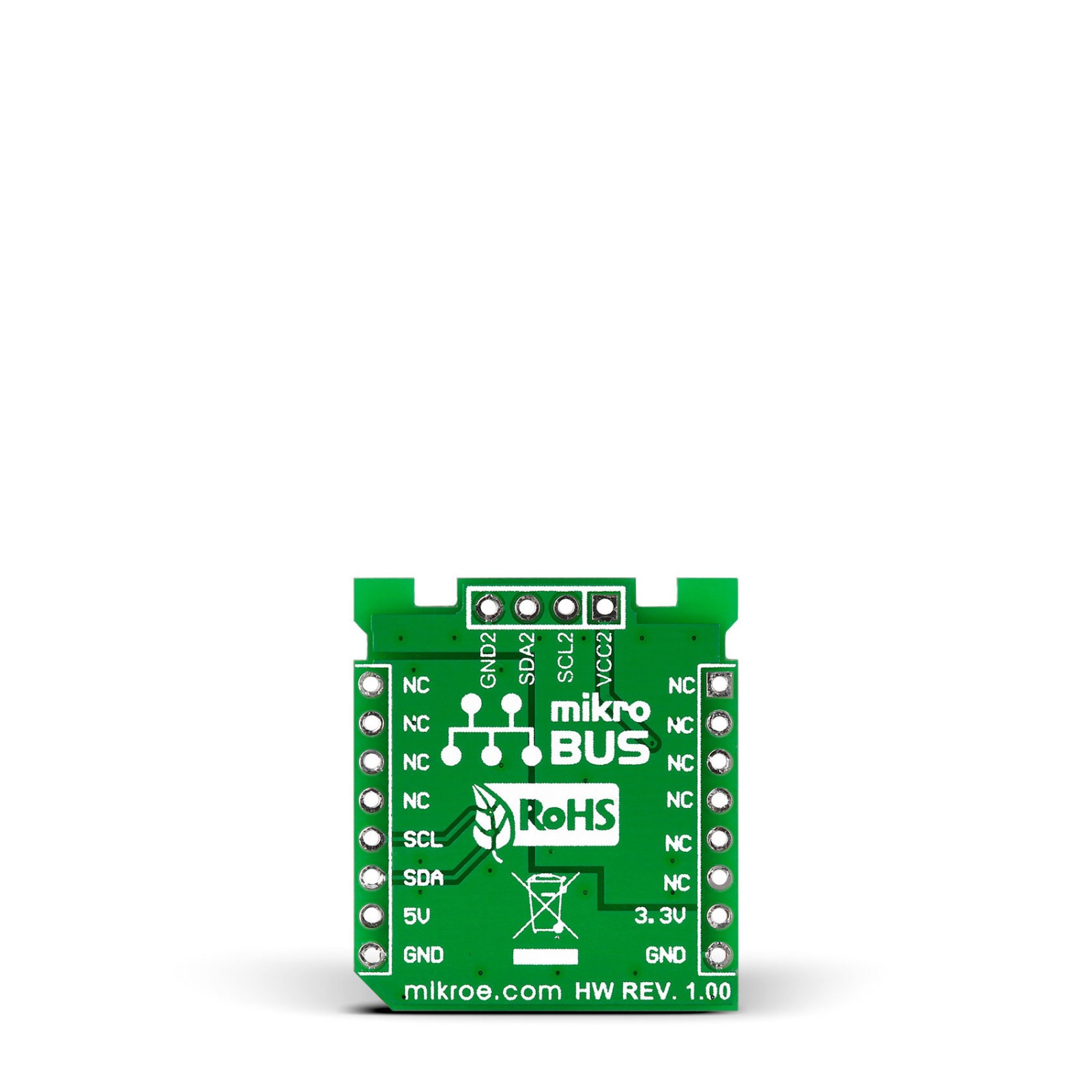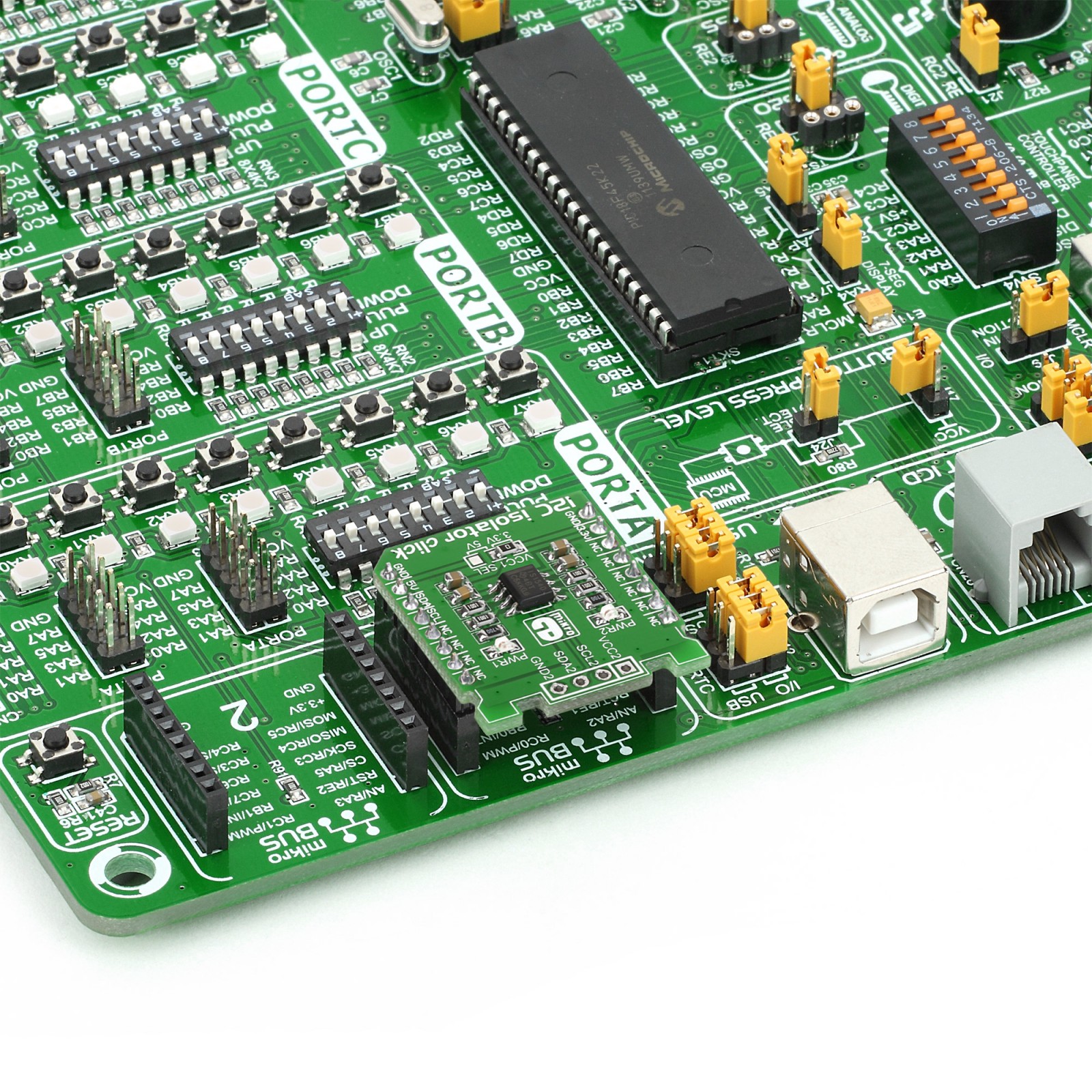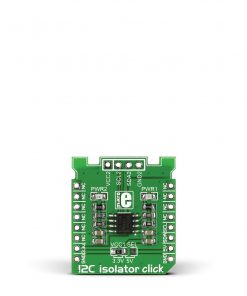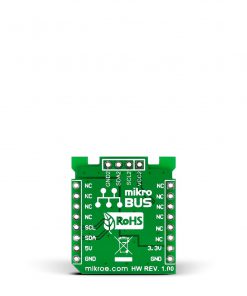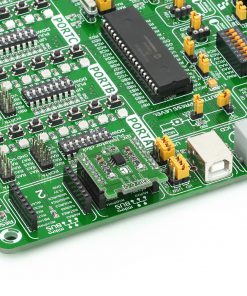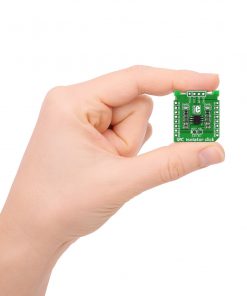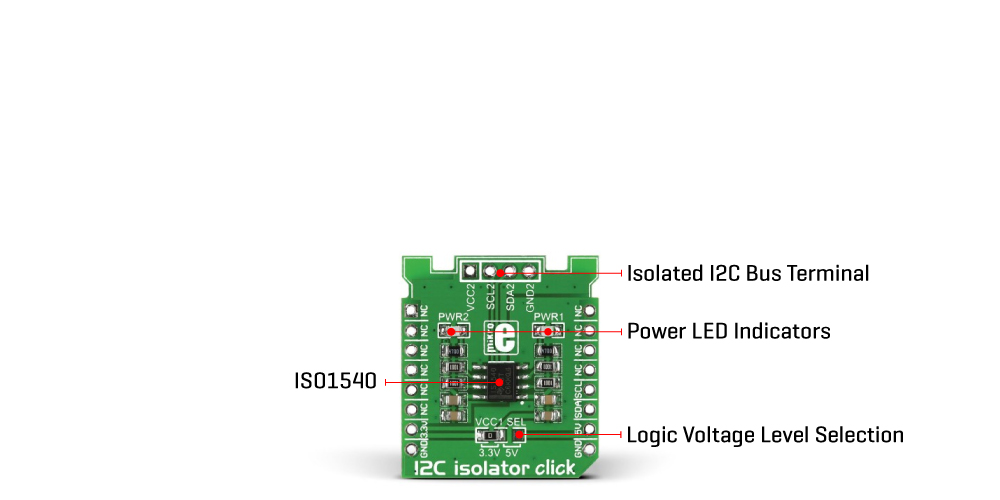I2C Isolator Click
R395.00 ex. VAT
I2C Isolator Click is a compact add-on board that offers completely isolated bidirectional communication. This board features the ISO1540, a low-power, 2.5kVrms bidirectional isolator compatible with the I2C interface from Texas Instruments. The ISO1540 has logic input and output buffers separated by Texas Instruments Capacitive Isolation technology using a silicon dioxide (SiO2) barrier. When used with isolated power supplies, it blocks high voltages, isolates grounds, and prevents noise currents from entering the local ground and interfering with or damaging sensitive circuitry. This Click board™ is suitable for multi-master applications and for applications where slave clock stretching is possible.
I2C Isolator Click is supported by a mikroSDK compliant library, which includes functions that simplify software development. This Click board™ comes as a fully tested product, ready to be used on a system equipped with the mikroBUS™ socket.
Stock: Lead-time applicable.
| 5+ | R375.25 |
| 10+ | R355.50 |
| 15+ | R335.75 |
| 20+ | R323.11 |


